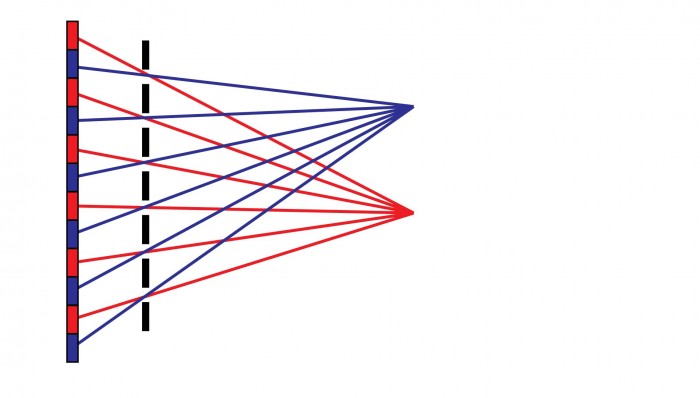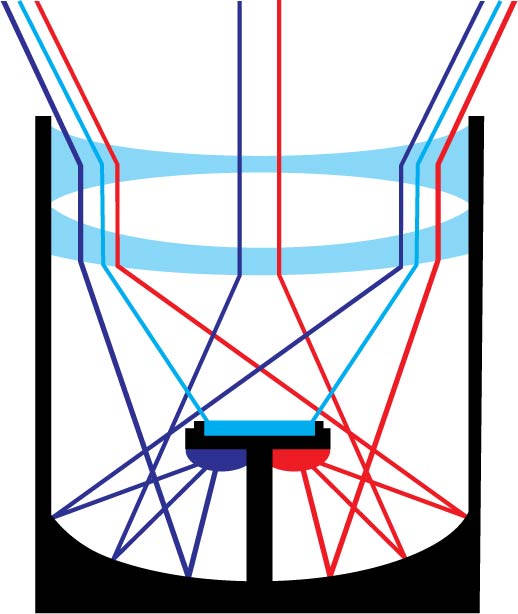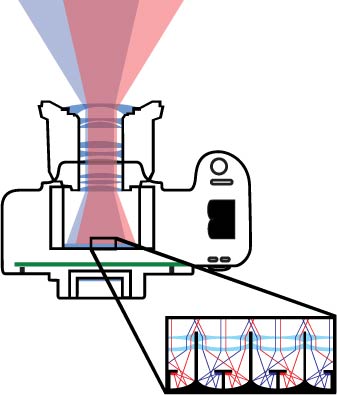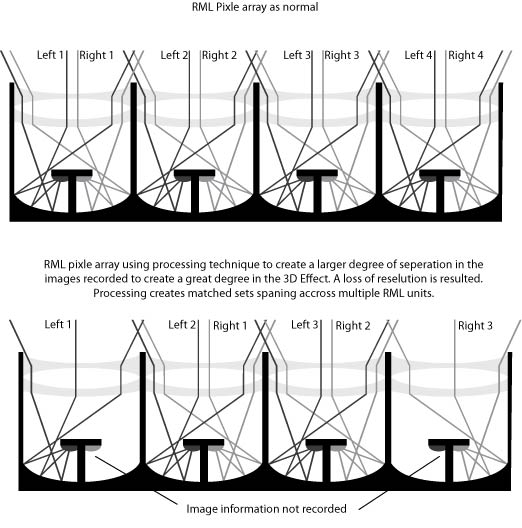
Home List your patent My account Help Support us
3D - METHODS FOR PRODUCING AND CAPTURING 3D IMAGES
[Category : - ELECTRONICS- OTHER- Audio - Video]
[Viewed 7107 times]
Historical Brief:
Televisions have evolved using a series of refinements over the decades. However, throughout these advancements, the fundamental principals have remained mainly unaltered, from the very first black and white TV, where only information pertaining to luminosity was sent to a specific pixel, to color TV where the only difference made was the addition of a color sub carrier to the old technology. When TVs transitioned to HD technology the resolution increased but the technology behind the TV remained the same.
The next evolution in the TV viewing experience, 3D images, brings a whole new methodology of viewing but is still based on the same TV technology as before. Many believe that the 3D TV today uses a completely new internal technology. In reality, it utilizes only a modification of the previous TV technology.
3D images are created by replicating how the human eyes see, allowing for our sense of depth and perception of space. To create a 3D image using two cameras, they must record an image simultaneously from different angles, mimicking how human eyes see. Both images are then projected by the same source in unison. However, this does not fully create a 3D image but only an image that will appear blurry to the viewer. The images then need to be filtered out so that the image recorded by the right vantage point is only seen by the right eye and vice versa for the left. This can be done in a number of ways. First, it was by chromatic filtration using red and green lenses in the glasses. This worked but provided horrible coloration in the resulting image. Newer technology has emerged using polarized light allowing for images to be viewed with unaltered and vibrant colors.
There are 3 types of 3D TVs in either commercial distribution or in research stage. These utilize Active, Passive and/or Parallax technology.
Active 3D technology uses an electronic shutter in the viewing glasses to produce a 3D image. The TV will show 120 images per second, 60 images for the right eye and 60 for the left. The glasses synchronize with the TV by using an infrared or bluetooth signal. The signal generated from the TV controls the activation of liquid crystal in the optics of the glasses. When an electrical current passes through the optics, the liquid crystal causes the optic to go opaque blocking out the image. The glasses alternate the optical element in synchrony with the TV. This allows only the image meant to be seen by a particular eye to be seen at any given time. As this happens faster than the human eye can detect, the illusion that there is a constant 3D image is created.
Passive 3D technology uses polarization of light. This is a much more sophisticated form of anaglyph, the 3D technology used for decades with the red-green glasses. Passive 3D is what is used in the commercial movie theaters, primarily with the use of inexpensive eye glasses. Passive TVs work by having every other pixel polarized in the opposite direction. Image information meant for the left eye is polarized in the opposite direction as the right. The glasses are then polarized to correspond with the polarization angles from the TV. Polarization is typically at 45 degrees for the left eye and 135 degrees for the right. As the lens optic on the glasses only allows for light with the same polarization angle to pass through the correct image is delivered to the right eye.
Parallax Barriers allow for 3D viewing with out glasses by using a barrier film matched to the pixel pitch of the screen, providing the illusion of 3D. Every other pixel in the screen will show an image for the corresponding eye. Parallax barriers rely on restricting light to travel in one direction crossing through the barrier and then to the human eye. However good this may sound the technology is limited to one and only one viewing angle which is very restrictive for home viewing.
These three technologies all rely on reusing existing TV technology and only adapting it to overcome a new obstacle rather than redesigning the technology specifically for the purpose intended, creation of a 3D image.
The design I have developed is completely unique in that it does not try to adapt existing TV technology meant for 2D viewing, which then converts the 2D image produced to 3D, but completely redesigns TV technology from the ground up specifically for 3D viewing without the use of glasses. This is accomplished by designing a completely new style of diode based on the technology that records a 3D image and then recreates a 3D image. Micro lens technology is the solution to create glasses-free 3D TVs and this is how the human eye creates a 3D viewing experience in every day life and how 3D images are recorded. A second problem arises in delivering corresponding images to the correct eye. If two lenses are used to project the image then the two images will blur together upon projection. Therefore, the images must be projected in unison through the same lens pre-filtered for separation. This is accomplished using a modification of optical technology commonly found in telescopes.
The system that I am proposing is the use of a new technology that I am referring to as a “3D Reflex Micro Lens” 3D-RML. Depending on the application of the RML both receptive or projective models could be produced allowing for various applications of the technology.
Receptive 3D-RML’s would consist of dual Photodiodes in the Parallax assembly within the RML allowing for the recording of 3D images. Multiple RML’s would be assembled into a Matrix to produce a sensor of any given resolution. when installed into a camera a Single lens could be used as in an “Single Lens Reflex” SLR camera in order to record a 3D image due to the nature of the RML design.
Projective RML’s would consist of Dual “Light Emitting Diode” LED’s with in the Parallax assembly allowing for the simultaneous projection of multiple images. the RLM’s would be combined into a Matrix with the desired resolution for the screen. 3D viewing will be possible with out additive eye ware.
Image 1 Below:
The diagram below shows how a parallax barrier produces a 3D image using a modification of existing 2D screen technology. Two images are interlaced with each other. The barrier then restricts the light to a single direction. The crossing of the light emitted from each diode focuses the complete image for the right and left eye to merge at a particular point. This is the only point at which a 3D image can been seen by the viewer.
Financial information
Looking to sell patent.
Asking price:
Make an offer
Make an offer




[ Home | List a patent | Manage your account | F.A.Q.|Terms of use | Contact us]
Copyright PatentAuction.com 2004-2017
Page created at 2026-01-05 4:21:05, Patent Auction Time.
 Patent publications:
Patent publications: WO 2012149623
WO 2012149623 US 20140071246
US 20140071246 Great invention
Great invention